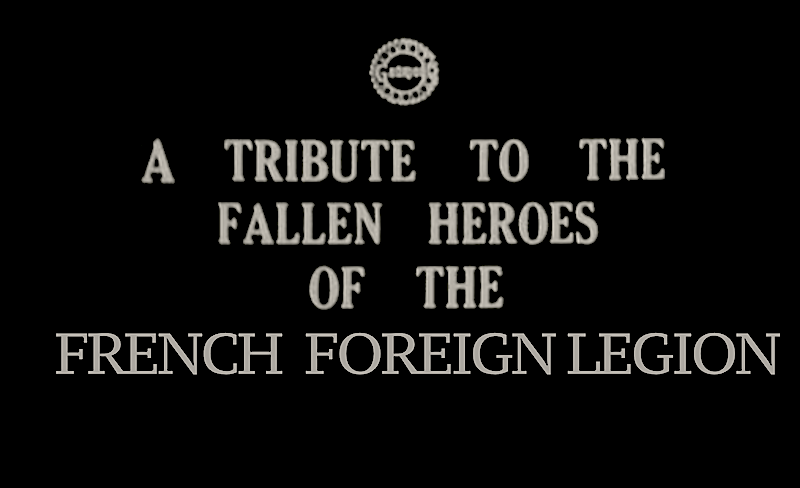
Lucky find
Whilst performing a more general search for images of the French Foreign Legion I came across a short newsreel on the website of British Pathé. Short in this context, really means short, that is 12 seconds.
As typical for this period this newsreel was started with a slate showing the text:
A TRIBUTE TO THE FALLEN HEROES OF THE FRENCH FOREIGN LEGION
The image of the slate you see above is a version I restored because on the video of the newsreel part of the text is not visible.
The Description
For someone familiar with the history of the French Foreign Legion it is not a big challenge to identify at least one person visible in this newsreel, lieutenant colonel Rollet.
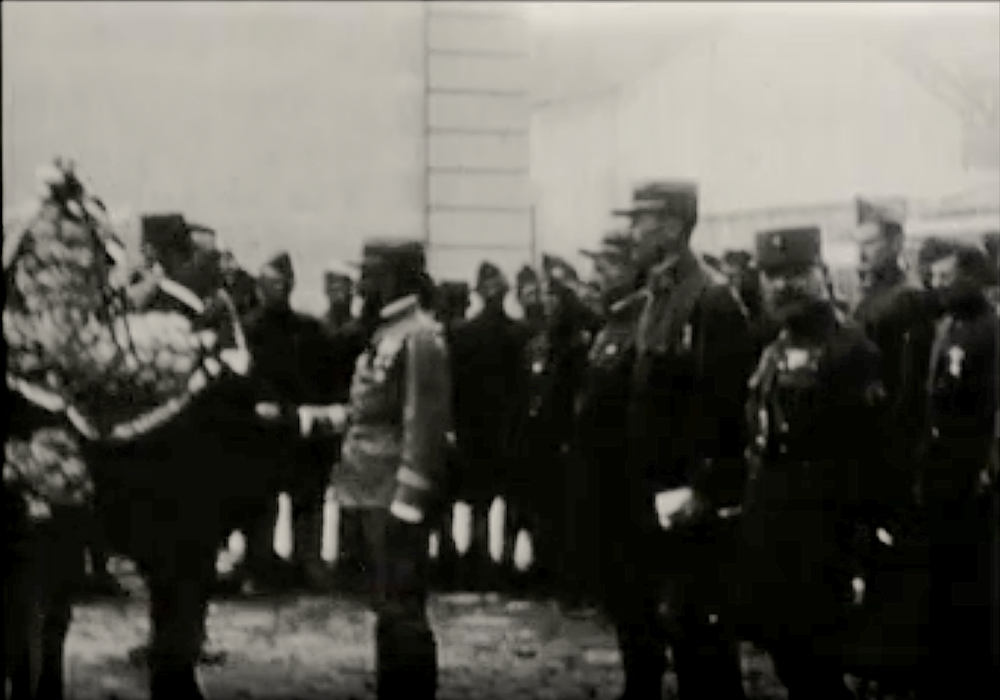
As such I was somewhat surprised reading the Description provided of this newsreel:
Description
SLATE INFORMATION – A TRIBUTE TO THE FALLEN HEROES OF THE FRENCH FOREIGN LEGION
FRANCE (?) Unknown location
Unidentified man in civilian clothes shaking hands with French foreign legion officer (wearing medals and kepi cap ) / unidentified soldier (pilot ?) holding with wreath at ceremony.

Elias Boutelje
Studying the image more closely the “Unidentified man in civilian clothes shaking hands” with Rollet, looked somehow familiar. Combined with the gesture of giving a flower wreath, this could to my knowledge only be one man; Elias Boutelje President of the “Comité des Engagés Volontaires Hollandais” in Paris.
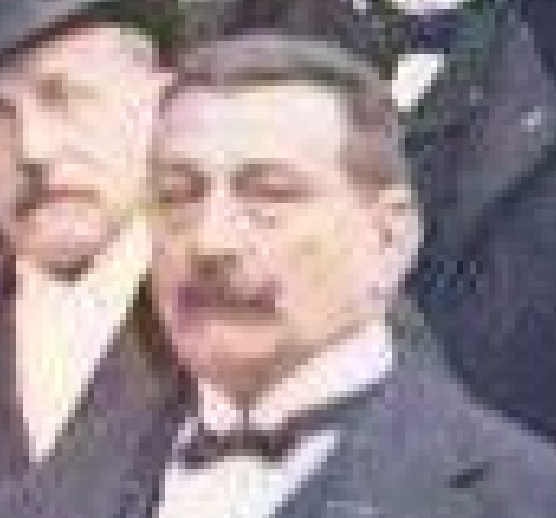
Further data provided by British Pathé showed the data of issue 26-07-1917 and that the newsreel was made by Gaumont a French Film Company also producing and distributing newsreels.
Data
ARCHIVE: Reuters
GROUP: GAUMONT GRAPHIC NEWSREEL (REUTERS)
ISSUE DATE: 26/07/1917
COLOUR: Black & White
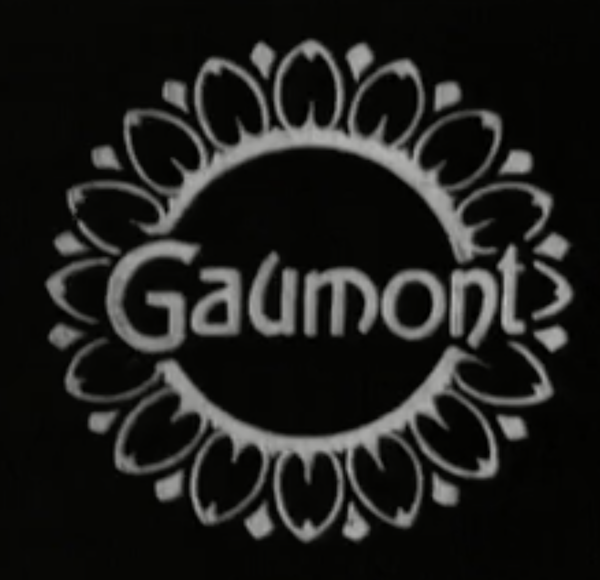
The Gaumont archive and Gallica
Although already quite confident that the Unidentified man was Elias Boutelje, I continued my research in both the Gaumont archive and in Gallica.
In the Gaumont archive I found the newsreel, very interesting was the description provided:
“At the REUILLY barracks”.
Reference
1729GJ 00006
Summary catalogue PARIS: At the REUILLY barracks.
A Military Cross in natural flowers is given to the brave of the Foreign Legion.
The bugle of the legion.
Soldier.
Dates First distribution : 1917
As such, now also the location was identified.
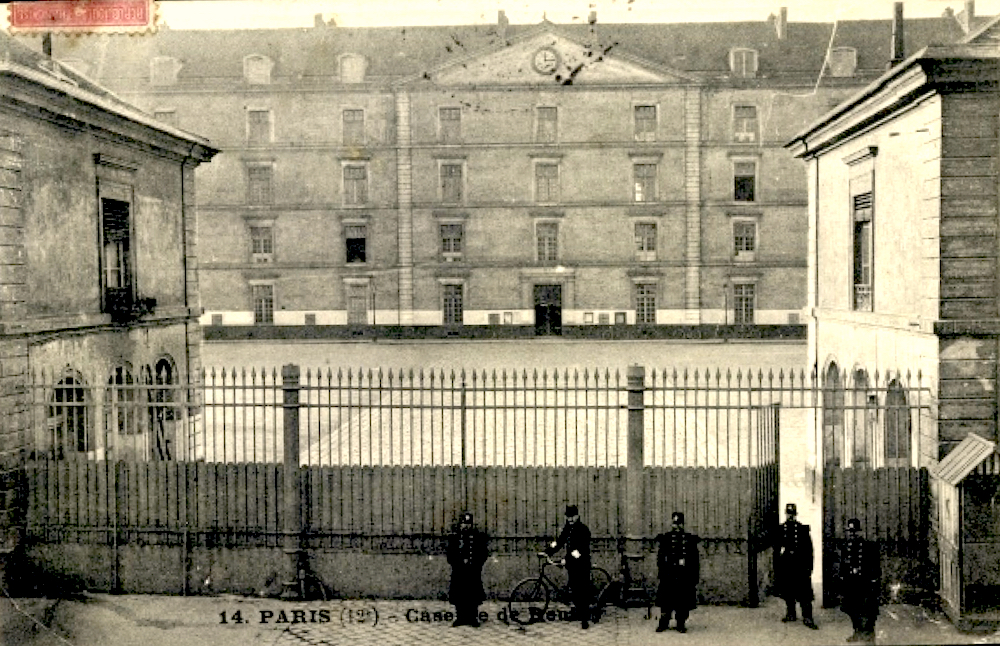
And as so often I was amazed with what can be found in Gallica.
Before my research had really started it already came to an end.
I found following news article published in Le Petit Journal on the 14th of July 1917 by searching on the names of the two identified men, Rollet and Boutelje.
Described is that at the Reuilly barracks a delegation of the “comité des engagés volontaire hollandais, was present in the afternoon of the 13th of July 1917, to give to lieutenant colonel Rollet a wreath of natural flowers depicting the croix de guerre, decorated with a palm in silver on which the 5 citations gained by the légion were shown. The wreath was further decorated with de fourragère in the colors of the médaille militaire.
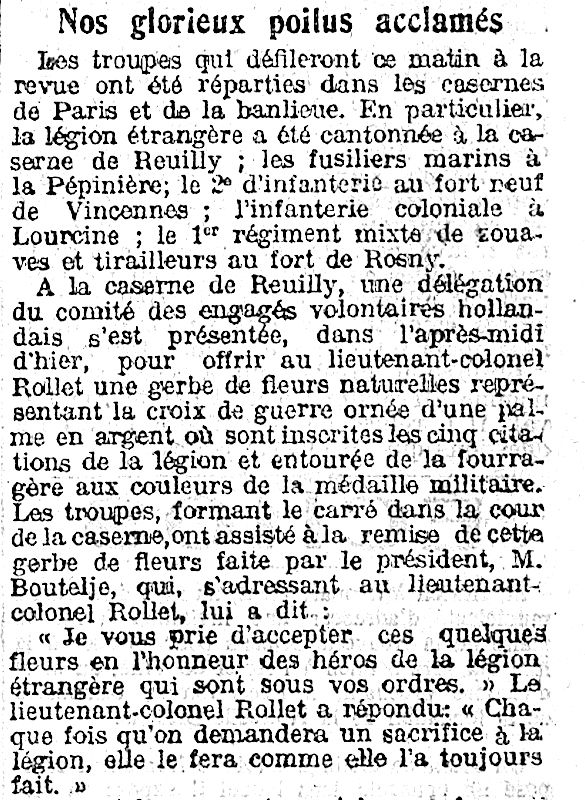
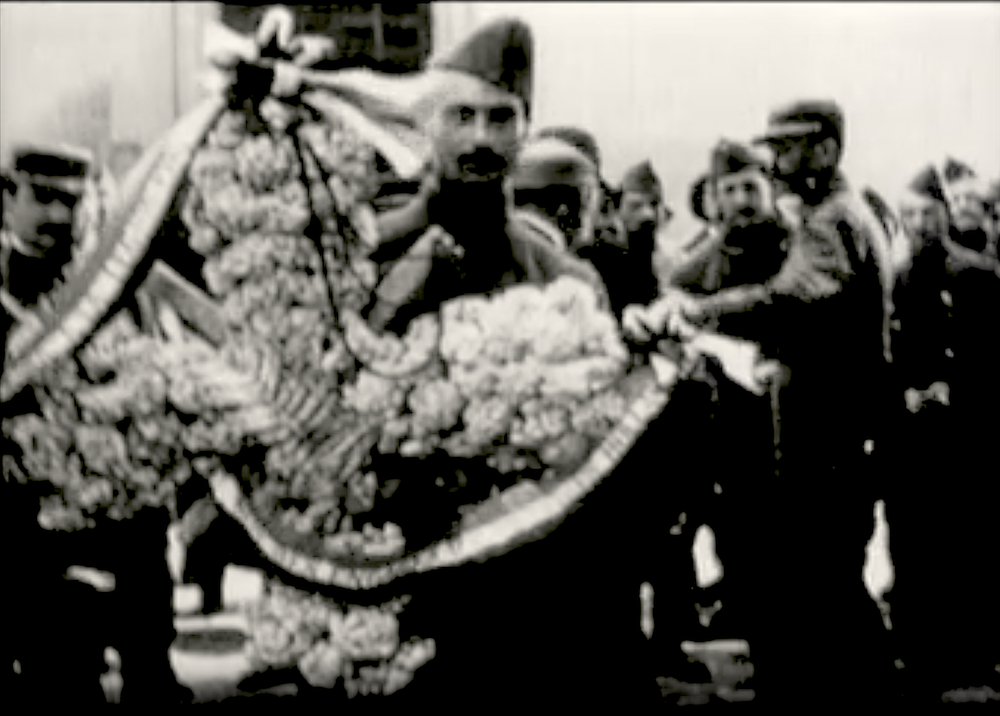
Foreignlegion.info
The webmaster of Foreignlegion.info was as always very supportive with my research.
He provided me with two photographs of the same even, of a much better quality of the film stills.
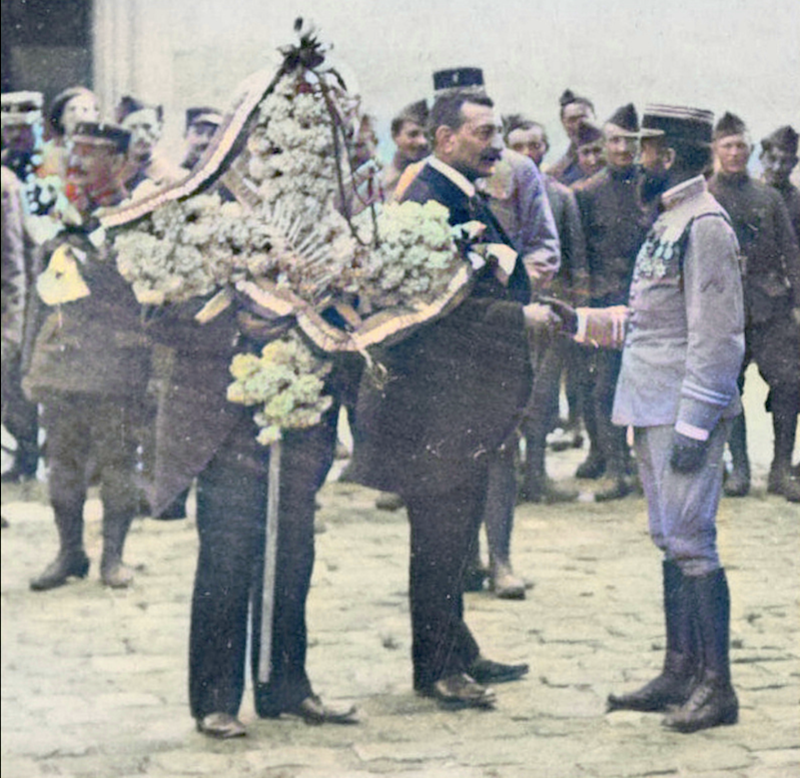
The origin of this photograph could be traced back to the French Images Défense.
Following details are provided by them :
Une délégation hollandaise remet une gerbe de fleurs à la légion étrangère, caserne de Reuilly, à Paris.
Le colonel Rollet participe à la cérémonie en accueillant la délégation hollandaise.
Référence SPA 15 W
Date de prise de vue 11/07/1917
Photographe(s) Jacques Ridel
Date 11/07/1917
Lieu(x) Caserne de Reuilly – Paris
Personnes représentées Rollet, Paul Frédéric
Note that the indicated date is not correct, this should be 13/07/1917.
Le General Paul Fredric Rollet
In the otherwise fairly detailed biography of Rollet, by Pierre Soulié, no reference is found to this event.
Soulié, wrote the following about the parade on the 14th of July 1917 in Paris and the days preceding it.
[Képi blanc février 1994]
La division marocaine dont fait partie le R.M.L.E. est envoyée au repos. A Dampierre où se trouve cantonné le régiment, parvient I ordre du général Pétain, commandant en chef, transmis par le général Gouraud, commandant la 4eme armée, prescrivant l’envoi à Paris d’un détachement du R.M.L.E. pour participer à la revue que passera, le 14 juillet, le président de la République qui remettra au régiment la fourragère de la médaille militaire, nouvellement créée.
Aux termes de cet ordre, la délégation doit être constitueé du chef du corps, du drapeau avec sa garde, d’une compagnie “de préférence citée à l’ordre” et, de la musique. Aucune des compagnies n’ayant fait l’objet d’une citation à titre individuel toutes les citations collectives concernent l’ensemble du régiment —, le lieutenant-colonel Rollet fait former une compagnie d’honneur, en faisant prélever, dans toutes les unités, les sous-officiers et les légionnaires les plus décorés. Il la place sous le commandement du capitaine Maire qui doit être décoré de la croix de la Légion d’honneur et de la croix de guerre avec palme.
Plutôt que de recevoir ses décorations des mains du président de la République, le capitaine demande qu’elles lui soient remises par son chef de corps, témoignage de sa fidélité à la Légion et de l’ascendant que le lieutenant-colonel Rollet a su prendre en six semaines sur ses officiers.
du 11-07-1917 au 13-07-1917
Après quelques exercices de défilé, le détachement quitte Dampierre le 11 juillet au soir, va cantonner à Arcis-sur-Aube et embarque le 12 dans un train qui l’amène à Rosny-sous-Bois d’où des camions le conduisent à la caserne de Reuilly à Paris.
La reconnaissance des emplacements pour la revue qui sera passée sur le cours de Vincennes et de nouveaux exercices de défilé occupent la journée du 13.
du 14-07-1917 au 16-07-1917
Le 14 juillet, le président de la République, homme de petite taille, a des difficultés à agrafer sur l’épaule gauche du géant qu’est le capitaine Maire la fourragère aux couleurs de la médaille militaire. Ce dernier doit incliner le buste pour permettre au président d’atteindre plus facilement son «objectif».
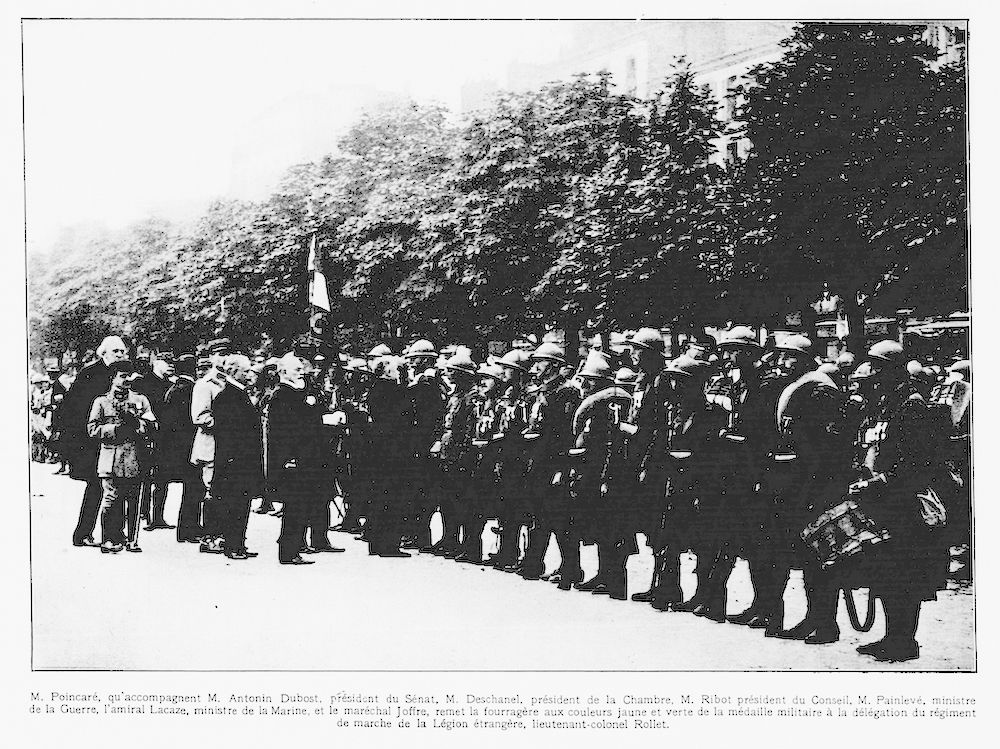
Le 14 Juillet 1917. La fête des drapeaux (1917)
Le détachement du R.M.L.E., en tête de toute l’armée française, défile aux accents du Boudin devant des Parisiens enthousiastes qui l’acclament tout au long du parcours. A la fin du défilé, devant un journaliste de l’Illustration, le lieutenant-colonel Rollet déplore que le tambour-major n’ait pas de canne.
Quelques jours après, ce même journaliste lui écrit que l’Illustration offre au R.M.L.E. une canne et que son directeur espère que le chef de corps viendra à Paris en prendre possession au nom du régiment.
Après la dislocation, les légionnaires se dispersent dans la capitale et profitent des invitations à partager le verre de l’amitié avec des civils.
Le 16 juillet, c’est un détachement encore dans l’euphorie des honneurs et des libations qui rejoint Dampierre.